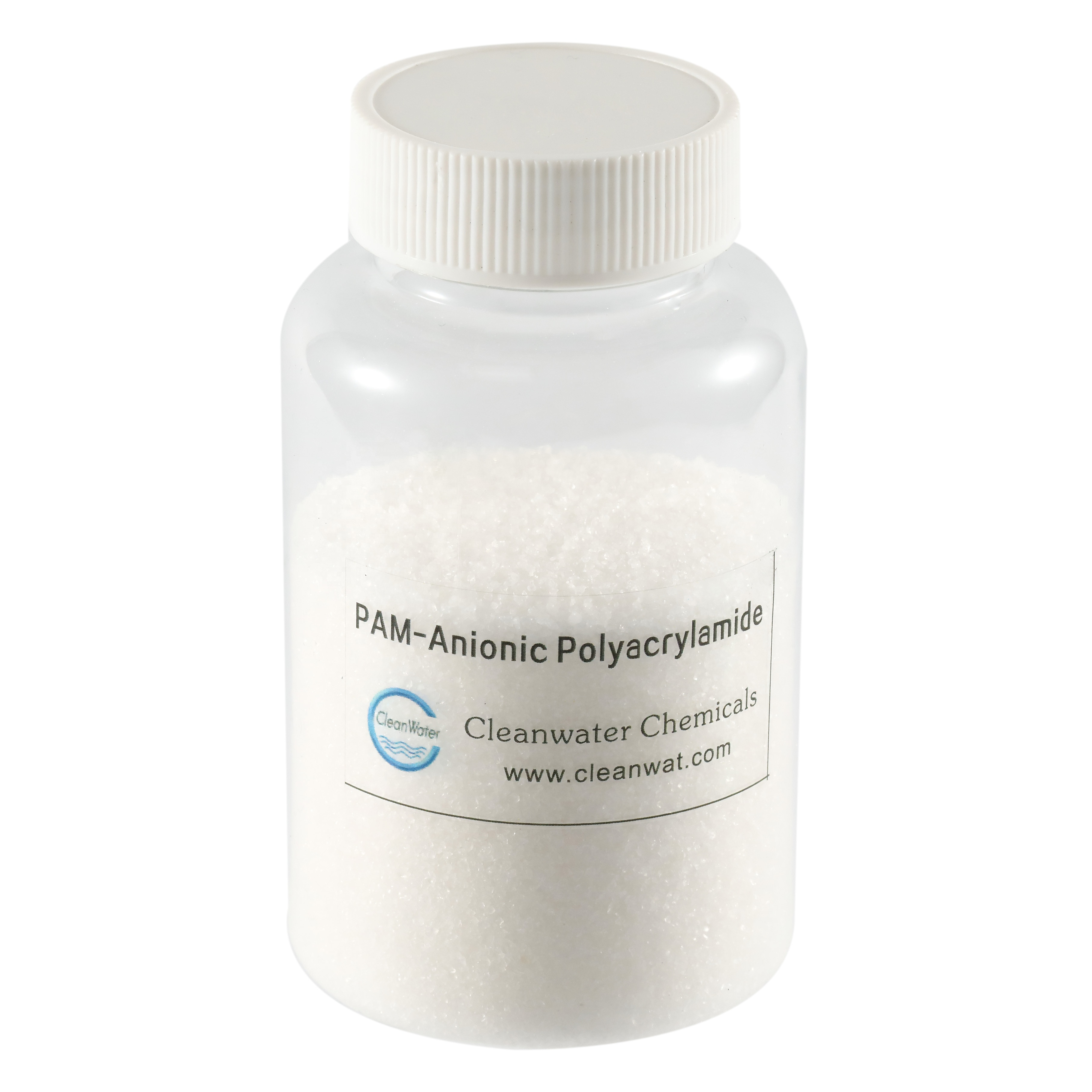There are many types of flocculants, which can be divided into two categories, one is inorganic flocculants and the other is organic flocculants.
(1) Inorganic flocculants: including two types of metal salts, iron salts and aluminum salts, as well as inorganic polymer flocculants such as polyaluminum chloride. Commonly used ones are: ferric chloride, ferrous sulfate, ferric sulfate, aluminum sulfate (alum), basic aluminum chloride, etc.
(2) Organic flocculants: mainly polymer substances such as polyacrylamide. Because polymer flocculants have the advantages of: small dosage, fast sedimentation rate, high floc strength, and the ability to increase filtration speed, its flocculation effect is several to dozens of times greater than that of traditional inorganic flocculants, so it is currently widely used in water treatment projects.
(Professional water treatment agent manufacturer-Clean Water clean world)
Polymer flocculant--polyacrylamide
The main raw material of polyacrylamide (PAM for short) is acrylonitrile. It is mixed with water in a certain proportion and obtained through hydration, purification, polymerization, drying and other processes.
The following conclusions can be drawn from previous experiments:
(1) Anionic PAM is suitable for inorganic suspended matter with high concentration and positive charge, as well as coarse suspended particles (0.01~1mm), and neutral or alkaline pH value.
(2) Cationic PAM is suitable for suspended matter with negative charge and containing organic matter.
(3) Nonionic PAM is suitable for separation of suspended matter in mixed organic and inorganic state, and the solution is acidic or neutral

Flocculant preparation
The flocculant can be solid phase or high concentration liquid phase. If this flocculant is directly added to the suspension, due to its high density and low diffusion rate, the flocculant cannot be well dispersed in the suspension, resulting in part of the flocculant not being able to play a flocculation role, resulting in waste of flocculant. Therefore, a dissolving mixer is needed to stir the flocculant and an appropriate amount of water to reach a certain concentration, generally not more than 4~5g/L, and sometimes less than this value. After stirring evenly, it can be used. The stirring time is about 1~2h.
After the polymer flocculant is prepared, its validity period is 2~3d. When the solution becomes milky white, it means that the solution has deteriorated and expired, and it should be stopped immediately.
The amide group of polyacrylamide produced by Yixing Cleanwater Chemicals Co., Ltd. can be affinity with many substances, adsorb and form hydrogen bonds. Relatively high molecular weight polyacrylamide forms bridges between adsorbed ions, generates flocs, and accelerates the sedimentation of particles, thereby achieving the ultimate goal of solid-liquid separation. There are anionic, cationic and non-ionic types. At the same time, customers can also customize products of different specifications
Disclaimer: We maintain a neutral attitude towards the views in the article. This article is for reference only, communication use, not for commercial use, and the copyright belongs to the original author. Thank you for your attention and support!
Whatsapp:+86 180 6158 0037

Post time: Oct-17-2024

